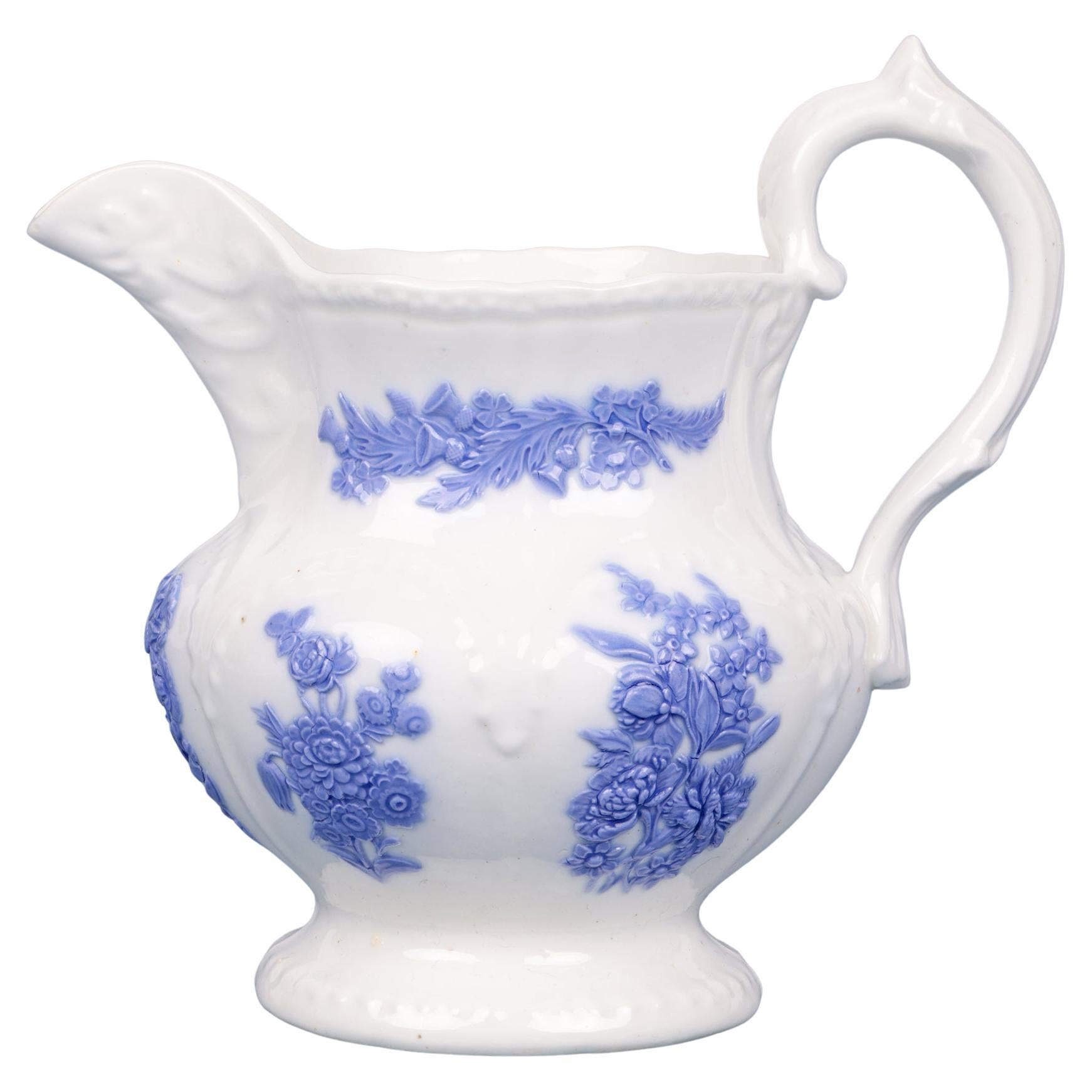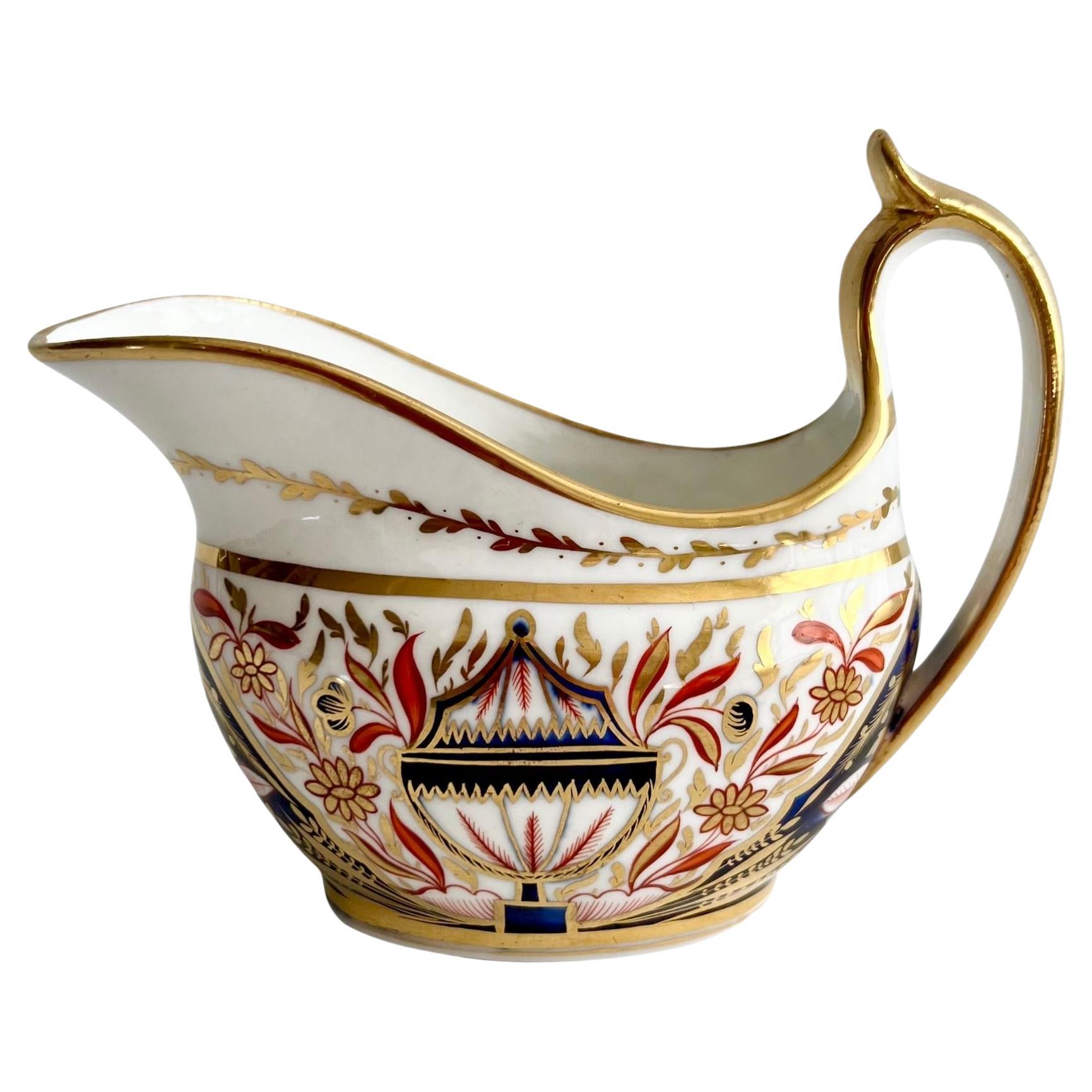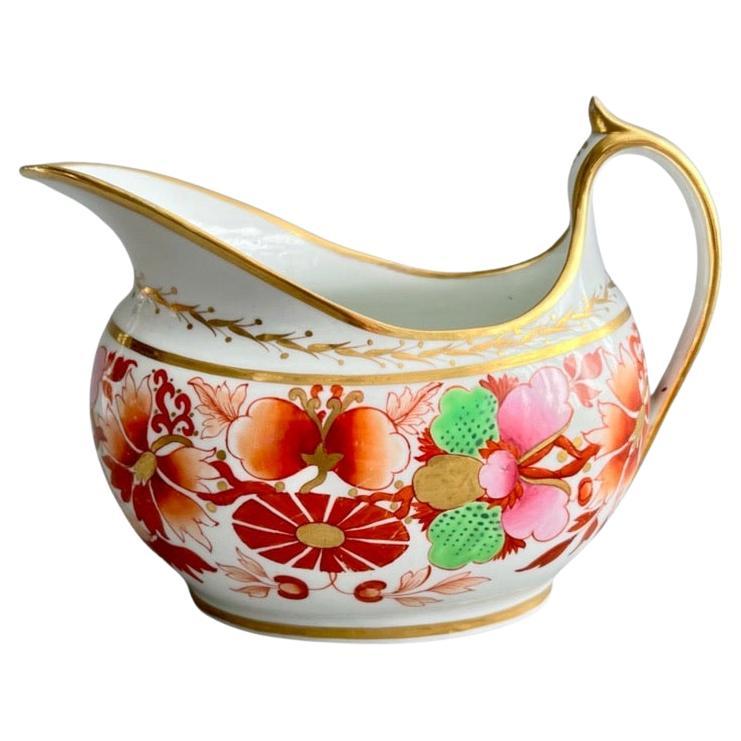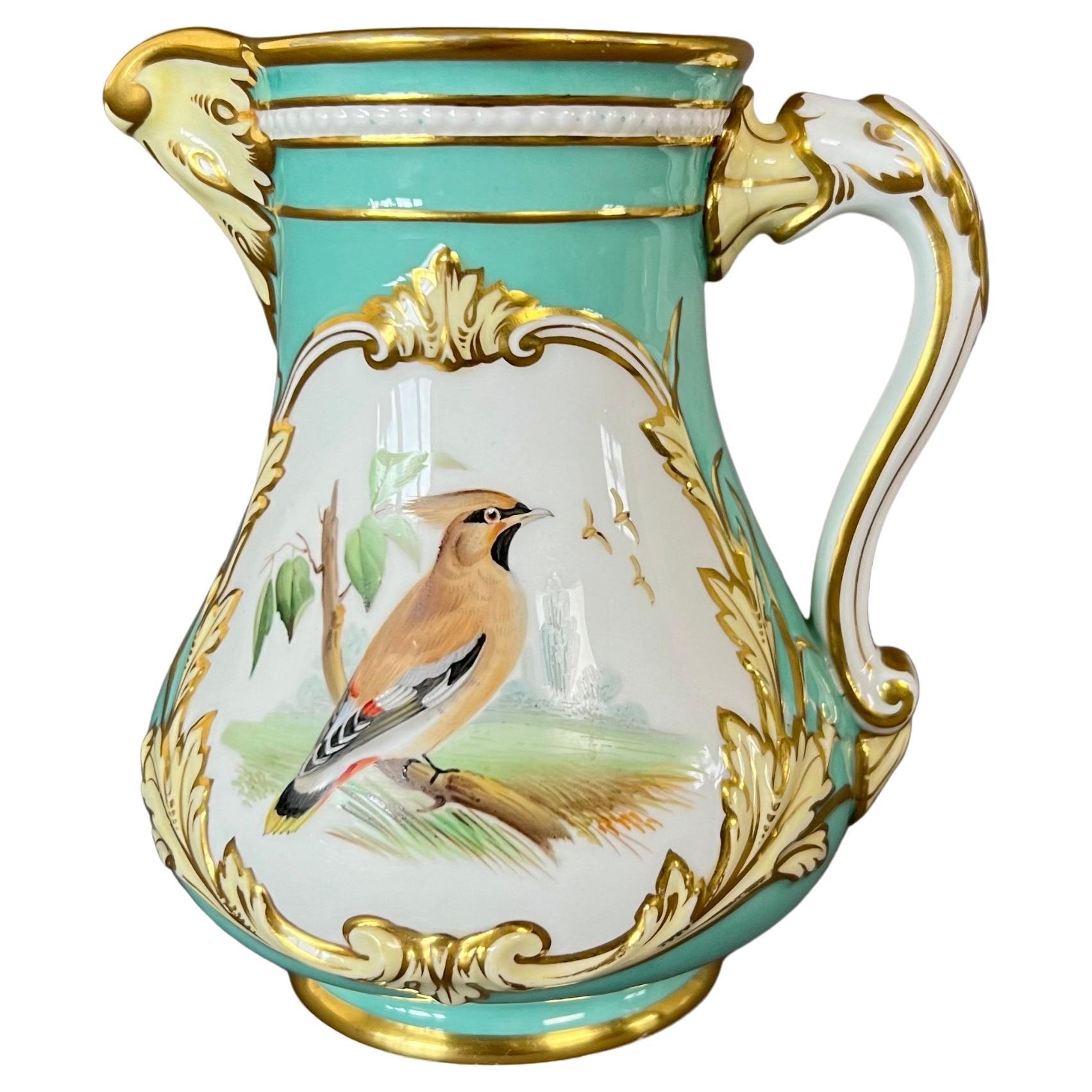Items Similar to Antique English Staffordshire Transferware Serving Creamer Jug Pitcher
Want more images or videos?
Request additional images or videos from the seller
1 of 12
Antique English Staffordshire Transferware Serving Creamer Jug Pitcher
About the Item
"Antique 20th century Staffordshire transferware porcelain jug or pitcher featuring an English landscape in black, originally designed by James Cutts for W. Adams & Sons, and a yellow border around the upper edge. “James Cutts was born in 1808 in Pinxton, Derbyshire, he was the 9th of 10 children and the youngest of five boys. His father, John Cutts, was a moderately gifted china painter, trained at the Derby porcelain works, who moved to become manager of the Pinxton porcelain factory. Sometime after 1803, John Cutts took over the Pinxton works after which date the factory may have concentrated on decorating. In 1813 the business closed and the Cutts family headed for North Staffordshire where John Cutts was employed by the Wedgwood company. In 1816 he left Wedgwood and started up his own business as an enameller. James, as an engraver, took a different artistic path and where he trained is not known, and although the Davenport factory has been suggested, there is no supporting evidence. It seems likely that he had established himself by 1830 for in that year he married, and by 1834 he is documented in White’s Directory of 18342. It is known that he did work for several potters. Dishes produced by William Adams & Co. in the 20th century, carries a mark on the back which states This pattern was arranged by J. Cutts Des. The well known artist & published by W. Adams & Sons in c. 1853. The wording suggests that even many years later in the 20th century Cutts was well respected and renowned enough to be a recognizable asset in marketing the product.” “Several branches of the Adams family operated factories in the Staffordshire Potteries in the latter half of the 18th and early part of the 19th centuries, including three men named William Adams, who have come to be known as William Adams I, II and III. [i]
William Adams I (1746-1805) was born within weeks of his father’s death and inherited a potworks at St John’s Square, Burslem. His mother died before he was one year old and he was raised by his grandfather who managed the factory until William came of age. By 1779 he was also potting at the Greengates Works in Tunstall: by 1786 Greengates had been enlarged and a third factory acquired at Newfield, Tunstall. William Adams I was an accomplished potter whose best known products included stonewares, jasper and basalt of the highest quality. Pieces are recorded impressed ‘ADAMS’ and ‘ADAMS & CO’. At his death in 1805, his son Benjamin was still a minor and it is said that the business was carried on by his elder sister Mary until Benjamin took over the works on attaining his majority in 1809. Amongst his recorded output are stonewares and blue printed earthenwares impressed ‘B. ADAMS’. The marked blue printed wares are of a light blue tone and none feature American subjects. The firm encountered financial difficulties and closed in 1820, the Greengates factory being acquired by John Meir.
William Adams II (1748-1831) of the Brick House Works Cobridge was a minor when his father died: during his minority the pottery was let to Josiah Wedgwood during which time it was known as the Bell Works. William Adams II took over the pottery when he attained majority in 1769, Wedgwood then moving to the newly built Etruria. During his potting career, this William owned or occupied several factories both alone and in partnership with others, but no marked ware of his manufacture has ever been identified.
William Adams III of Fenton Hall and Bagnall (1772 -1829.), was the son of Richard Adams of Cobridge (1739-1811) and was the founder of the firm whose products are featured on this site. Having been in an earlier partnership for some years, William III set up on his own account at Cliff Bank, Stoke in 1804, where he manufactured general earthenware including blue printed pottery. William III had four sons: from 1819 onwards he successively took his sons into partnership and the business was extended to a very large size, by the mid-19th century occupying no less than six factories, both at Stoke and Tunstall. It is written that William, son of William Adams III had travelled to America and established a business in New York in the name of Adams Brothers. This is difficult to confirm, but John Ridgway noted meeting Mr Adams of Stoke when he was in New York in November, 1822[ii]. The firm had an extensive American trade and the letters of Matthew Smith, the Baltimore importer, to his Liverpool agents contain several references to his dealings with them”". Measure: 7".
- Dimensions:Height: 5.25 in (13.34 cm)Width: 6 in (15.24 cm)Depth: 7.25 in (18.42 cm)
- Style:Late Victorian (In the Style Of)
- Materials and Techniques:
- Period:
- Date of Manufacture:Early 20th Century
- Condition:Wear consistent with age and use. Good Overall - Gentle wear/spots.
- Seller Location:Dayton, OH
- Reference Number:
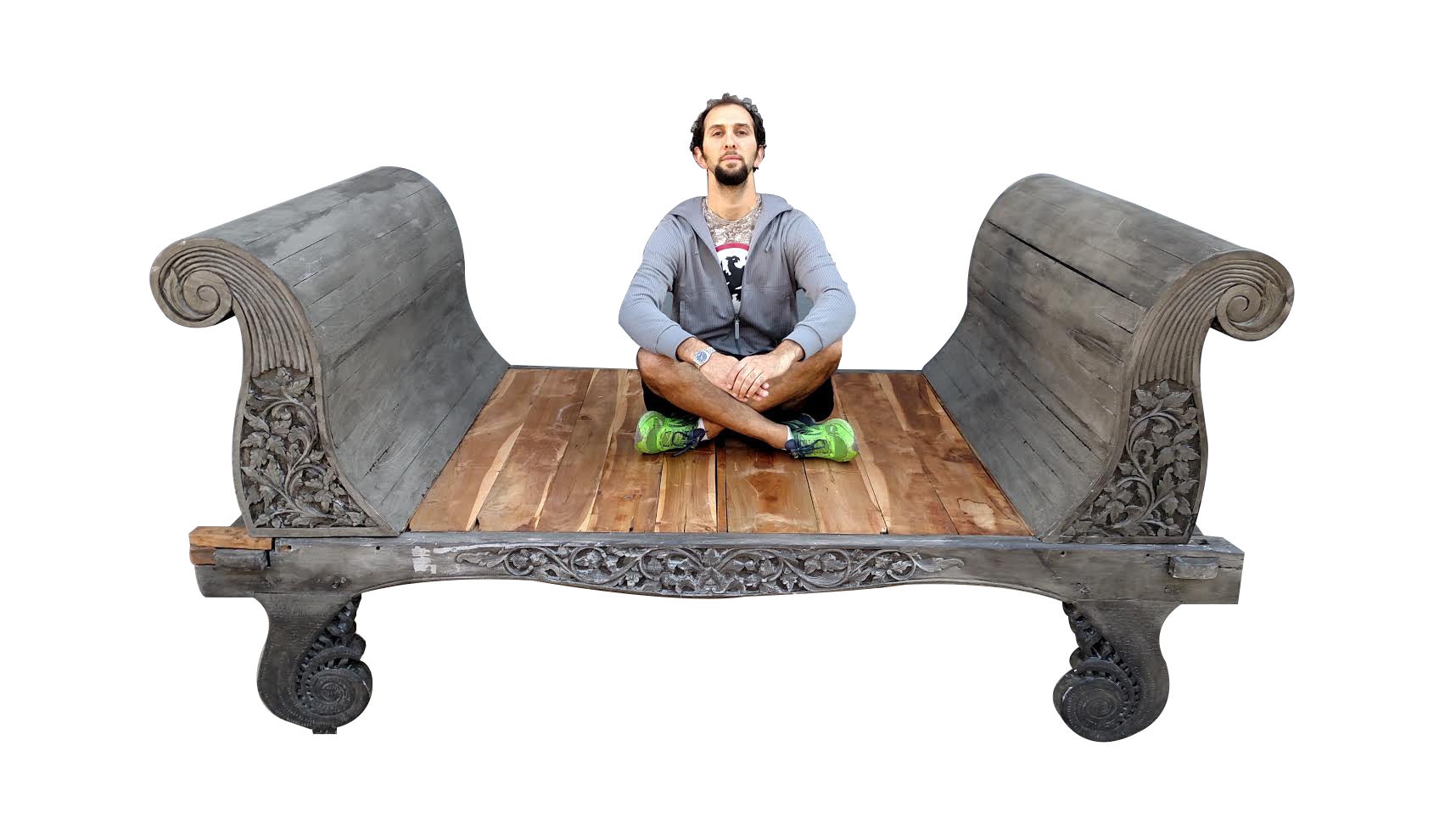
About the Seller
4.9
Platinum Seller
These expertly vetted sellers are 1stDibs' most experienced sellers and are rated highest by our customers.
Established in 2010
1stDibs seller since 2020
1,113 sales on 1stDibs
Typical response time: <1 hour
- ShippingRetrieving quote...Ships From: Dayton, OH
- Return PolicyA return for this item may be initiated within 2 days of delivery.
More From This SellerView All
- Antique Alfred B Pearce Porcelain Rose Pitcher Ewer Wash Basin Bowl LondonLocated in Dayton, OHAntique English porcelain pitcher / ewer and wash basin / bowl set from Alfred B. Pearce & Company featuring printed pink roses and gilded accents. Alfred B. Pearce was a porcelain and glassware retailer that was established at Ludgate Hill, London in 1760. The business appears to have been most active in the Victorian era, offering a wide variety of ceramic and porcelain tableware. The company traded...Category
20th Century British Victorian Porcelain
MaterialsCanvas, Paint
- Antique Delinieres & Co. French Limoges Hand Painted Wine Pitcher Tankard GrapesBy Delinieres & Co. 1Located in Dayton, OHThis antique tankard was made around the turn of the century in France. Features beautiful hand painted grapes over a earthy green color. The upper lip...Category
Early 20th Century French Provincial Pitchers
MaterialsPorcelain
- Antique Porcelain Floral Bird Tea Coffee Creamer Pitcher & CupLocated in Dayton, OHAntique Porcelain Floral Bird Tea Coffee Creamer Pitcher & Cup DIMENSIONS Pitcher - 5” x 4” x 6.25” / Cup - 3.25” x 2.75” (Width x Depth x Height)Category
Early 20th Century Pitchers
MaterialsPorcelain
- Antique English Copeland Late Spode Toby Jug Pitcher Colonial EnglishmanBy Copeland SpodeLocated in Dayton, OH19th century Copland Late Spode English Staffordshire rare porcelain toby jug in the shape of asdeated colonial Englishman holding a cup and pitcher. 180288...Category
Antique 19th Century Federal Porcelain
MaterialsPorcelain
- Antique Victorian Cut Crystal Silver Plated Claret Jug Coffee Beverage PitcherLocated in Dayton, OHAntique Victorian claret jug or pitcher. Made of crystal featuring a wheel cut pattern with silver plated handle, lid and spout. These jugs becam...Category
Antique 19th Century Victorian Pitchers
MaterialsCrystal, Silver Plate
- 3 Antique Egyptian Hammered Copper Water Can Jug Pitchers Bonsai GooseneckLocated in Dayton, OHThree of assorted hammered copper pitchers featuring various designs and styles with fleur de lis and ribbed accents, and scrolled handles. One features a bonsai gooseneck spout. Sta...Category
Antique 19th Century Egyptian Pitchers
MaterialsCopper
You May Also Like
- Antique English Caughley Porcelain Milk Pitcher or JugBy Caughley PorcelainLocated in Philadelphia, PAA fine antique English porcelain milk pitcher or jug. Comprising the pot, a conforming lid, and a later associated chain connecting the two. With blue underglaze decoration of...Category
Early 20th Century English Georgian Pitchers
MaterialsPorcelain
- Antique Staffordshire Porcelain Lilac Sprig Decorated JugLocated in Bishop's Stortford, HertfordshireA very fine antique English Staffordshire porcelain jug decorated with lilac sprigged floral designs and dating from around 1830. The jug is finely made in white porcelain and is of ...Category
Antique 1830s English Regency Pitchers
MaterialsPorcelain
- Minton Porcelain Creamer Milk Jug, Neoclassical Imari, Regency, ca 1810By MintonLocated in London, GBThis is a beautiful and rare milk jug or creamer made by Minton in about 1810. The jug has a very beautiful neoclassical Imari pattern with the number 202. Minton was one of the p...Category
Antique 1810s English Regency Porcelain
MaterialsPorcelain
- Barr Flight & Barr Milk Jug / Creamer, Regency Imari Pattern, ca 1810By Barr, Flight & Barr WorcesterLocated in London, GBThis is a colourful milk jug or creamer made by Barr Flight & Barr around the year 1810. It is decorated with a bright Imari design in the Regency taste. This milk jug would have be...Category
Antique 1810s English Regency Porcelain
MaterialsPorcelain
- Spode Milk Jug Creamer, Cobalt Blue Neoclassical Pattern Imari, Regency Ca 1825By SpodeLocated in London, GBThis is a beautiful milk jug or creamer made by Spode around 1825. The jug is decorated in a beautiful Neoclassical pattern in Imari colours and has a characteristic serpent handle. ...Category
Antique 1820s English Regency Porcelain
MaterialsPorcelain
- Samuel Alcock Cream Jug, Pitcher, Eau de Nil with Jay and Landscape, 1854By Samuel Alcock & Co.Located in London, GBA cream or water jug / pitcher with elegant scrolled moulding, an eau de nil ground colour with yellow and gilt leafy scrolls, with a jay on one face and a landscape on the other Pattern unknown Year: 1854 Size: 143m (5.1”) from handle to mouth, 14cm (5.75”) tall Condition: a crack in the top of the handle with associated line in the body, some crazing but the jug is stable and good for use The Samuel Alcock factory was operative in Staffordshire between 1822 and 1856, after which it was bought by Sir James Duke and Nephews. The factory started as a partnership between the young Samuel Alcock and the older Ralph Stevenson, who provided the factory and capital. Alcock quickly took the factory to great heights, building one of the biggest factories of its time. Alcock jumped on the new Rococo Revival fashion and served a huge new middle class market. The reason we now don't hear much about Samuel Alcock porcelain is that much of it has been mis-identified over the years and attributed to Coalport, Ridgway, Rockingham or others; Alcock did not mark any of his porcelain save a few rare pieces, and the numbering system is difficult to understand. However, the wares are still wide spread and many are of great quality. This jug forms part of the Murray Pollinger Collection of Samuel Alcock Porcelain. Most of the collection is not publicly available yet, but if you would like to get access to the first 100 lots, please sign up for our mailing list...Category
Antique 1850s English Victorian Pitchers
MaterialsPorcelain
Recently Viewed
View AllMore Ways To Browse
Early American Painters
English Antique Imports
Antique Glass Bell
Antique Agent
Blue Dior Glasses
Dior Blue Glasses
William And Mary English
Antique Creamer
Antique Creamers
Yellow Porcelain China
English Antique Glass Company
Antique Silver Creamer
Yellow Chinese Porcelain
Victorian House I I
Antique Glass Creamer
Antique Glass Creamers
English Glass Bells
Enamelled Victorian Glass

